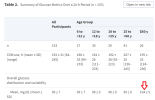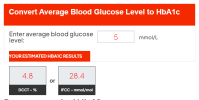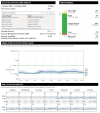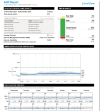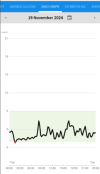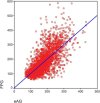- Relationship to Diabetes
- Type 1
- Pronouns
- He/Him
Thanks for the update @NewDawn
The rises in your glucose levels do seem fairly short-lived and the peaks were relatively modest in comparison to my efforts some days!
You might like to browse this thread which links to a fairly large 2019 study that looked into CGM responses of healthy subjects without diabetes.
It may give your results some context and background?

 academic.oup.com
academic.oup.com
A fairly large study from 2019 seeking to map out what "normal" BG profiles look like during the day and overnight, using CGM measures; often see it cited. Perhaps useful resource for people looking to benchmark themselves against "normal" etc.
Units are mainly in American for BG (mg/dl: divide by 18 for mmol/l) and for HbA1c (%; easy to find tools on-line for conversion to mmol/mol).
There is some circularity: the main thing for deciding whether somebody is "non-diabetic" is their HbA1c, so no surprise if BG profiles are...
The rises in your glucose levels do seem fairly short-lived and the peaks were relatively modest in comparison to my efforts some days!
You might like to browse this thread which links to a fairly large 2019 study that looked into CGM responses of healthy subjects without diabetes.
It may give your results some context and background?

Continuous Glucose Monitoring Profiles in Healthy Nondiabetic Participants: A Multicenter Prospective Study
This study provides normative sensor glucose data in a healthy, nondiabetic population of children and adults.
A fairly large study from 2019 seeking to map out what "normal" BG profiles look like during the day and overnight, using CGM measures; often see it cited. Perhaps useful resource for people looking to benchmark themselves against "normal" etc.
Units are mainly in American for BG (mg/dl: divide by 18 for mmol/l) and for HbA1c (%; easy to find tools on-line for conversion to mmol/mol).
There is some circularity: the main thing for deciding whether somebody is "non-diabetic" is their HbA1c, so no surprise if BG profiles are...
- Eddy Edson
- Replies: 2
- Forum: Links

